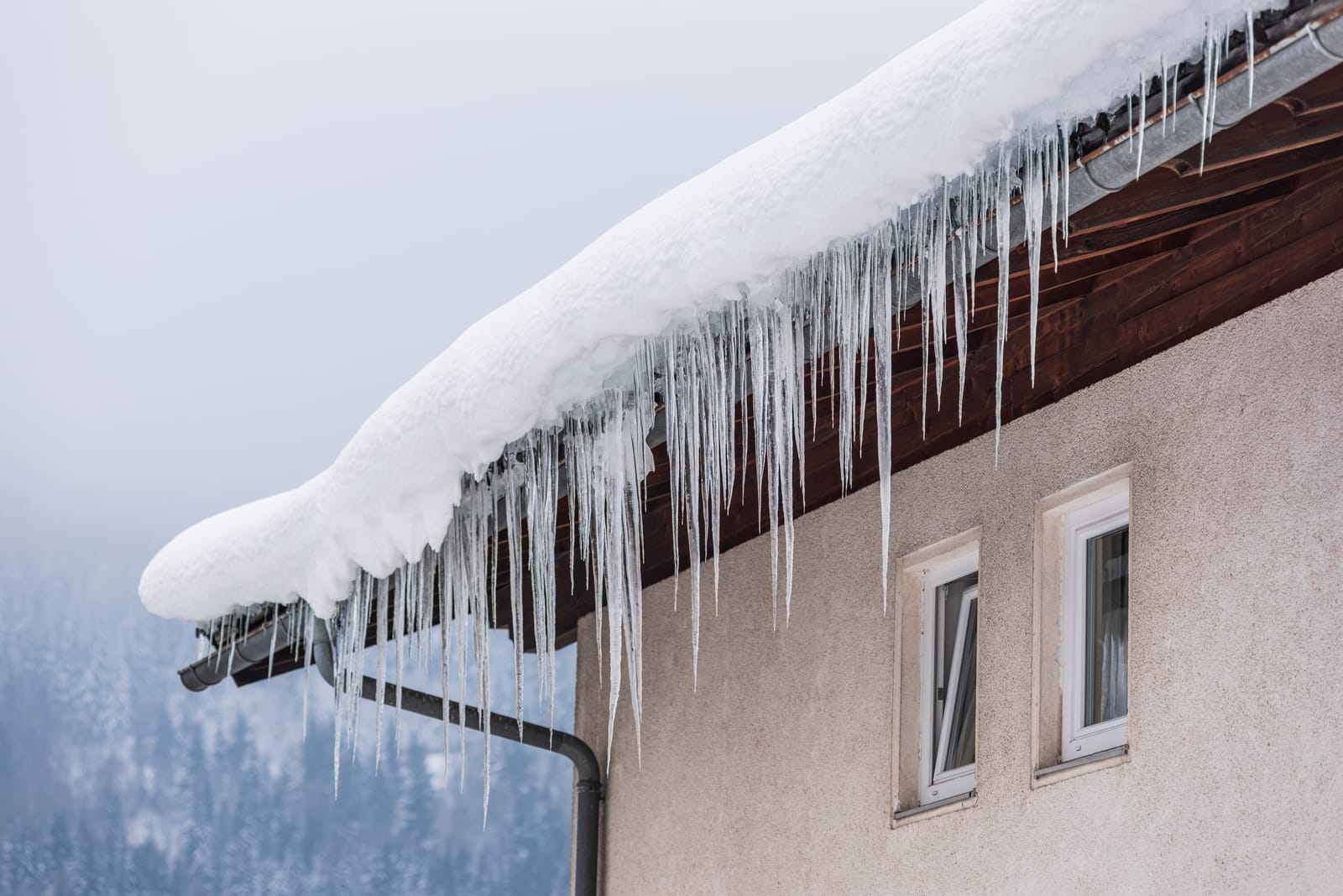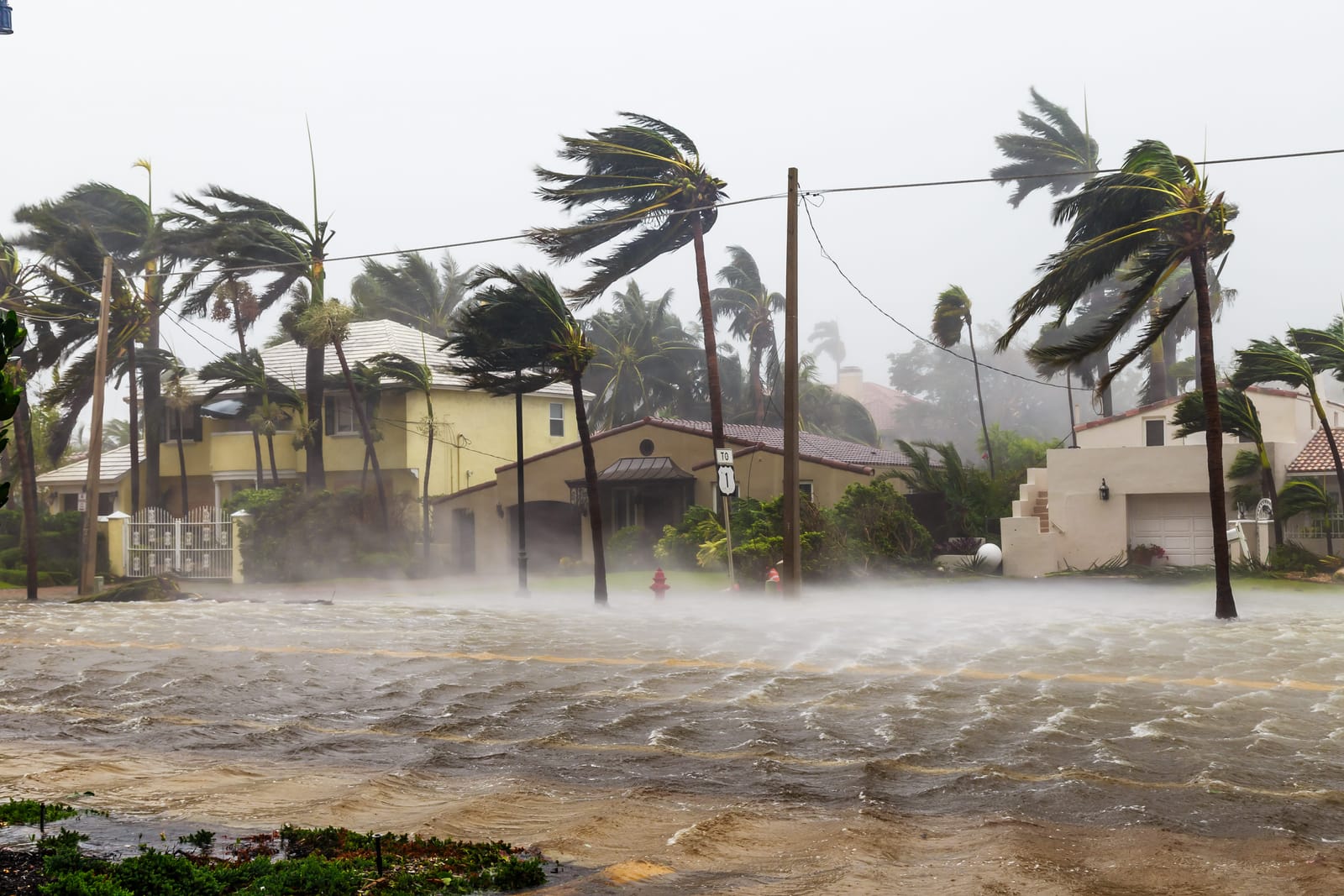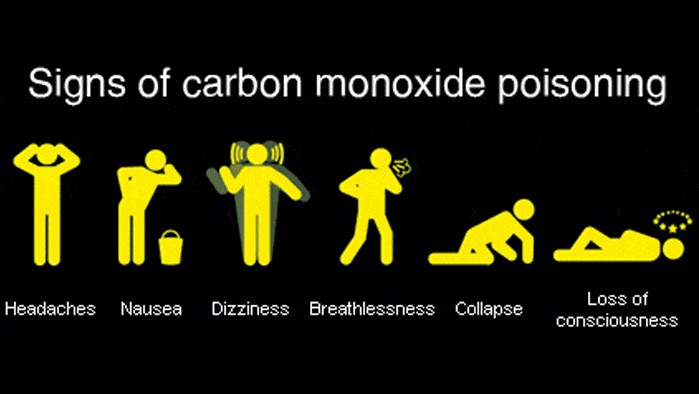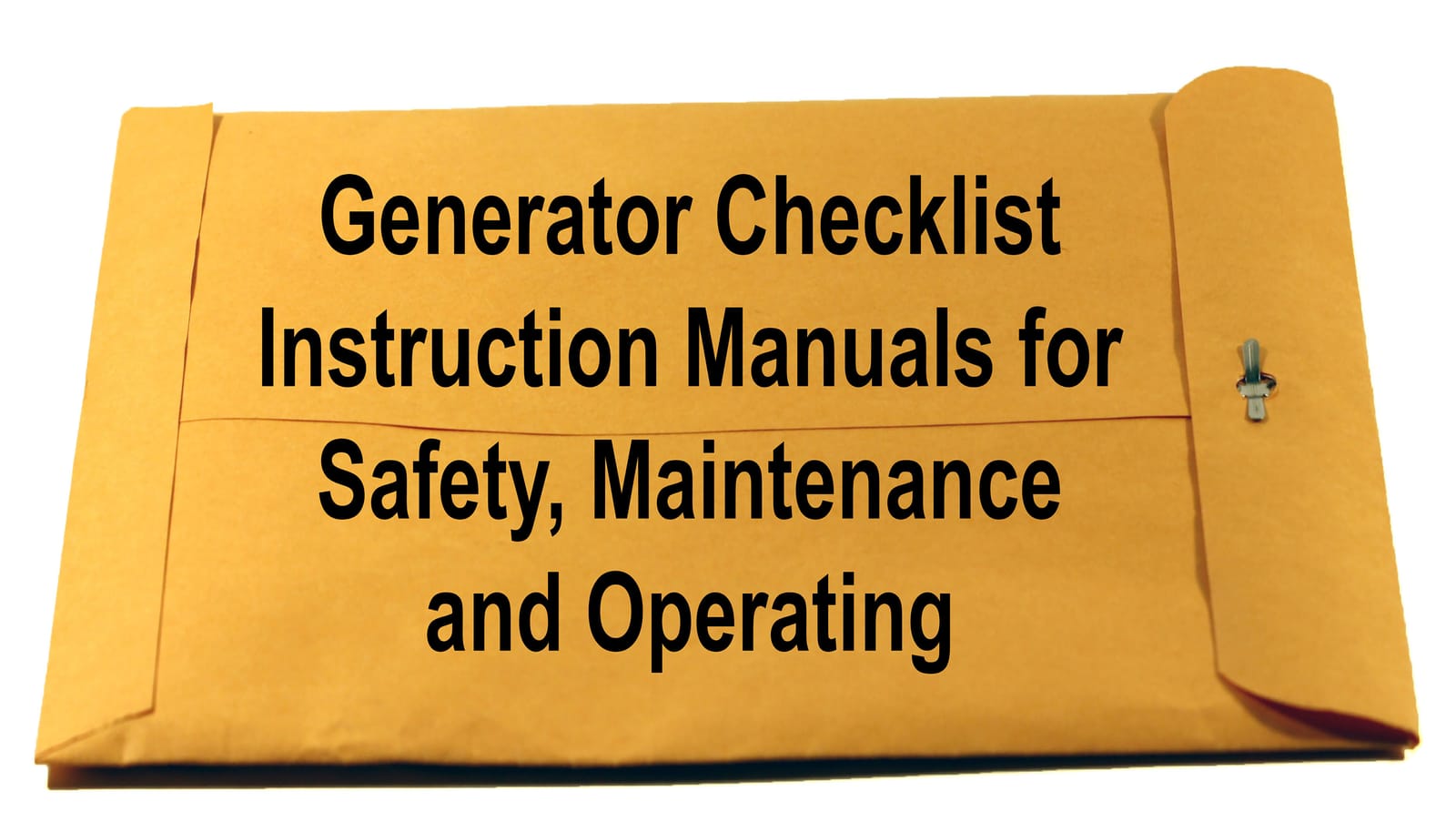10 Safety Tips For Using a Portable Generator During a Power Outage


David Jones
Senior Contributor
David Jones is a seasoned home inspector and construction expert with over 20 years of experience. He specializes in structural integrity, foundation issues, and detailed home safety assessments.
View Full Profile →
Most deaths, injuries, and electrocutions from the use of portable generators during power outages are from failures to follow basic portable generator safety guidelines. Knowing crucial safety tips for using a portable generator during a power outage are key in keeping you, your family, and your pets safe. Additionally, knowing what type of extension cords are safest, where you should or should not sit your generator, and how to recognize and avoid carbon monoxide poisoning is likewise essential in staying safe.
 Large fire and smoke plume possibly causing power outages and homes to burn
Large fire and smoke plume possibly causing power outages and homes to burn

Being prepared for wind and ice storms, floods, hurricanes, tornadoes, or forest fires can help save your life and property. Having a portable power generator and knowing how to safely use it can be an integral part of being prepared.
10 Don’ts That Can Save Your Life

-
Never run your generator inside your home, basement, garage, or on your balcony if a door or a nearby window is open. for a generators’ exhaust fumes are poisonous and can be deadly to humans or pets.
-
The 20 foot rule. Always keep your generator outside and at least 20 feet from any open window or door. If you are concerned about someone steeling your generator, chain it to a tree, pole or fence.
-
Refueling. It is not safe to refuel a generator while it is running. Shut it off and let it cool for around 3 to 5 minutes before refueling. Should fuel spill on a hot engine, there is a chance of fire or an explosion.
-
Do not direct a generators exhaust towards any open windows or doors. Always direct the exhaust away from those type of openings. If the home has a crawl space do not place generator near a crawl space vent.
-
Connecting a generator directly to your home’s main electrical power panel or the homes wiring can be extremely dangerous if improperly done. It can create a fire hazard, electrical shock, damage to home appliances, and possibly energize power lines that utility workers are working on and which they assume are dead until they energize the lines; injury or death could result. Always have a qualified electrician do any connections to your power panel or the homes wiring.
-
Don’t operate in rain or wet areas. The majority of portable home generators are not designed to be in the rain or exceedingly damp locations. Water can damage a generators electrical panel or the generator if it gets wet and may cause electrical shock. Having an open temporary tent to set the generator under is wise if you have no other rain protected spot. Avoid operating your generator in standing water and don’t you stand in water when plugging cords in.
-
Do not use damaged extension cords. Damaged extension cords should be replaced with new heavy duty extension cords. Damaged cords are more likely to result in shock, death or fire, than ones in good condition and in rainy or wet locations, they are extremely hazardous. Cords used outdoors should be rated for outdoor use, for they stand up to rain as well as hot and cold weather conditions.
-
Do not keep gas cans or other flammable generator fuels in your home and if you can, avoid storing them in an attached garage, also do not store them near a gas furnace, water heater or gas clothes dryer; for if gas fumes escape from the cans, a fire or explosion may occur. Remember to have the lids on tight and the cans in a location where small children cannot get to them. If you have an outdoor storage shed, that may be a better storage location.
-
Do not overload a generator. If a generator starts making unusual noises or seems warmer than usual, then it may be overloaded. A long period of overheating may cause a generator to stop operating or occasionally catch fire.
-
Do not set your generator on an unstable or sloping surface and if it is on wheels, be sure that they are locked in position or the generator is secured, so that it can’t roll or vibrate around.
10 Do’s That Can Save Your Life

-
First, carefully read all the instructions that came with your generator and call the manufacture if any questions. Also, read the maintenance recommendations and keep your generator well maintained, for you never know when you will need it.
-
Operate occasionally. Start your generator up a least every two months to ensure that it does start and then let it run for 15 to 20 minutes.
-
Stock up on fuel. A typical 5,000 watt generator can run about 24 hours with 20 gallons of fuel. Verify what yours requires. Having fresh fuel on hand to operate your generator for at least 12 hours to 3 days is wise.
-
Use only approved fuel storage cans or containers for your fuel. Most containers will have a fire and safety label that tells what the container is approved for. If gas, many people will add a gas fuel stabilizer to extend the storage life of the gas.
-
When living in a flood zone, make sure to have a plan on how high of a location that you will need to keep your generator from the flood waters. (If you are not sure if you live in a flood zone, FEMA has maps at https://www.floodsmart.gov/ )
-
Always check the oil before starting your generator and keep extra oil on hand in case you need to use the generator for extended hours or days.
-
Know ahead of time where you are going to sit your generator when you need it. Having a spot picked out when an emergency comes will help you keep from placing it in a unsafe location. Doing so will give you time to think about ventilation issues, length of extension cords, protection from the weather, etc.
-
Know the load capacity of your generator. If you do not know, check the generators’ manual or with the manufacturer. Avoid exceeding the generator’s capacity by running too many devices. You may need to alternate which devices are plugged into the generator to accomplish this.
-
Use heavy duty extension cords with a ground, preferably ones that have at least #12-gauge copper wire as the conductors. When using ones with #14-gauge wire, which are commonly found in many retail stores, be careful not to overload them, especially for long periods of time. Avoiding #16-gauge extension cords is wise, unless used for very light loads and for short periods of time. When using extension cords with splitters on one end where you can have two or three items plugged in at once; remember to be careful, so you do not overload the cord or generator.
-
Have a plan. Do you want emergency power for only a few hours or for several days? Know what items or appliances that you wish to power and for how long. This will help you determine how much fuel is needed, if your generator should be up sized or what you will not be able to serve with power. Additionally, it will help you plan on how many extension cords you will need, their wire size and the length of the cords.
In a four-year period, Florida had more deaths caused by portable generators, than from storms

With climate change many power outage events are getting bigger and more severe. In a number of cases, there are more deaths from using a portable power generator during a power outage, than from the cause of the power outage itself. In a four-year period, Florida, is a good example of this.
The 3 biggest risk when using portable generators are:
-
Electrical shock or execution
-
Fire
-
Carbon Monoxide Poisoning
The Consumer Product Safety Commission states that the most common cause of death from using portable generators is Carbon Monoxide poisoning.
Carbon monoxide is a colorless, odorless, and tasteless gas which can be deadly; that is why it is referred to as a “Silent Killer” by some.
More people are now purchasing portable generators as a power back-up for lighting, heating, air conditioning and cooking. Failure to know and follow safety protocols when using portable generators is a serious problem, but there are key life saving tips and guidelines, that if you know, may just save your family or your pets life.
When exposed to Carbon Monoxide

If exposed to carbon monoxide poisoning, get to fresh air immediately and if you have any symptoms of carbon monoxide poisoning, call 911 at once.
If exposed to a very small amount, just checking yourself for symptoms may be sufficient, but remember to keep monitoring yourself for a period of time for symptoms.
Going to the next level up, you may decide to visit an emergency room on your own or you may require being transported to one. The CDC reports that more than 50,000 people a year visit or are transported to a hospital emergency room and approximately 4,000 of these are then hospitalized.
Exposure to high levels of carbon monoxide poisoning can lead to death in less than 5 minutes. Prolonged exposure to low levels of CO poisoning can also lead to death or serious health issues. ( Learn more about symptoms of CO poisoning)
What Are The Long-term Effects of Carbon Monoxide Poisoning from the Exhaust of a Portable Generator?
Depending on the length of time you are exposed, which could be weeks, months, or even years, and the severity of the exposure, serious damage to the brain and nervous system can occur with devastating results, much of which may be irreversible.
It may damage the heart muscle which then reduces the heart’s pumping capacity and may permanently impair the hearts’ coradical functions. Also, a person may suffer long-term neurological problems, including loss of or problems with memory, speech, cognitive skills, mood, and behavior.
Unborn babies are very susceptible to CO poisoning, as well as small children and small pets.
Are Dogs and Cats More Vulnerable to CO Poisoning Than People?

Pets have no way of knowing that there is carbon monoxide poison in the air or know that they must get out quickly if a CO alarm goes off in the house. Often, they are at home alone and locked in with no way to escape to fresh air. In the winter months they may cozy up to a gas fireplace or a floor heater vent that is supplied by a gas furnace, both being a potential source for carbon monoxide.
They are sometimes left in a running vehicle in the garage while kids are getting ready to be taken to school or in the summer left in a running vehicle with the air conditioning on so they will be comfortable and cool while their owner runs into a store. All these scenarios may expose pets directly or indirectly to carbon monoxide. Small pets are more susceptible to CO poisoning than larger ones, but in reality, all pets are vulnerable. For your pets safety during power outages be careful where you place your portable generator.
One of the first signs of carbon monoxide poisoning in pets is that may appear listless, drowsy or lethargic. These are just a few of the warning signs, especially if you find them in a enclosed space or room. (Learn 6 other important symptoms to watch for)
Should your pet suddenly become ill and dies unexpectedly and you know that the death is not connected to old age or an existing health problem. Then you may want to explore the possibility of a carbon monoxide leak in the home.
Carbon Monoxide Alarms Save Lives

Surprisingly, many people have carbon monoxide alarms in their homes that are inoperable, have dead batteries, or are over 7 years old or not located in the correct places. Ones’ that are damaged, inoperable or are over 7 years old should be replaced with new ones. They should be tested regularly, preferable every month or two. Professionals usually recommend replacing the batteries once a year and some recommend every six months. One of the most overlooked things with carbon monoxide alarms is that people put them in the wrong locations, thus their effectiveness is reduced. (Learn where code requires them and where the best places are for carbon monoxide alarms )
Should you have a CO detector or meter with a digital readout?
Many safety experts suggest a home should have a carbon monoxide detector with a digital readout. Having one can tell you the level of carbon monoxide in your home. If you have a CO level that is just short of a critical point or that keeps increasing over time, then you can be pro-active and possibly stop a CO problem before it becomes a serious issue. Additionally, if you have pets, if you’re pregnant or have small children, it can give you an extra level of protection and peace of mind.
If you need help in starting or moving your generator, always ask someone to help you, but keep in mind portable generator safety guidelines
In many community’s, emergency personnel from the fire department, or other governmental agencies, and even neighbors, will help you in moving or starting your generator. Do not be hesitant to call or ask, for most people like helping others, especially in storms, floods, and other natural emergencies.
Try a dry run if you want to see how ready you are for a real power outage- you may be surprised
One of the best ways to know if you’re prepared for an electrical outage is doing a dry run; to actually set up your generator where you feel it will be located in an emergency and run your extension cords to the locations that you anticipate will need electrical power. Then run your generator and connect the appliances or devices that you will want to power. This will help tell you if you are actually ready or not.

Having a portable power generator when there is a loss of power can be a life saver. They can provide power for cooking, light to work by or see your way around at night, help run small appliances such as, fans, refrigerators, small heaters in ice storms or cold spells; the list goes on and on.
However, they can also be deadly or cause a fire if not properly used or operated, so it is crucial that you know the Do’s and Don’ts when it comes to your portable generator safety. It is also important that you read and follow the manufactures instruction manual on safety and maintenance.
Being proactive by having sufficient fuel on hand, extension cords and keeping your generator well maintained, along with a plan of what to do if the power does go out, may well save you, your family, or your pets life. Remember to help others by passing these tips on to them.
Next to Your Generator Have These 4 Documents

When a power outage hits, you do not want to be looking around your home trying to figure out where you put the following 4 documents that you may need. Remember, it may even be dark because of no power for the lights, making them even harder to find them. When the power is out and many things are going on, It is easy to overlook a safety tip that could save your family or pets life; therefore, it is recommended that you have the listed 4 items attached or stored near your generator in a safe, visible, clean and dry location. You may want to have them in a clear plastic pouch or manila envelope attached to the generator so they are easily accessed, should you need them
-
A quick portable generator safety checklist
-
The generators operation manual - how to operate the generator
-
The generators safety manual or safety instructions and recommendations.
-
The generators maintenance manual.
Portable Generator Safety Checklist?
Print the following list of what is needed to stay safe. Just as airline pilots run through a safety check list before every flight, you should do the same before operating your generator in a power outage.
Manufactures safety and operation manuals
-
Generator’s safety and operating instructions or manuals should be attached to or near your generator in case you need to reference them in a hurry.
-
If you haven’t read your generators operation and safety instructions or reviewed the maintenance manual; do so.
-
Maintenance and tune ups. Are all recommended maintenance recommendations complete and there is no damage to the generator that may cause an injury or fire?
-
Starting the generator. Check the oil and fuel before starting the generator. Then start the generator and let it run until it idles before plugging in extension cords, appliances, or other devices.
Fuel
-
Generator tanks should not be over-filled and there should be no spilled fuel. If fuel overflows onto a hot engine, it may cause a fire or explosion.
-
Only store fuel in safety approved containers and do not overfill them; leave a little room for fuel expansion.
-
Gas cans and other fuel containers should not be stored in the home and preferably not in an attached garage. They should not be stored near any appliance that uses fossil fuels (i.e. gas water heaters or furnaces). Fire Departments often recommend storage in a safe exterior shed or cabinet.
-
Proper pouring spout. Have a proper pouring spout available so there will be no fuel spills when filling the generators tank.
-
Do not smoke, have a lit fire or portable cooking or other devices near the generator when refueling or where fuel fumes could catch fire or explode.
-
Know and calculate the amount of fuel you wish to have on hand in case of a power outage. Verify you have fresh and sufficient fuel.
-
Gas. If the fuel is gas, think of its storage life and possibly adding a fuel stabilizer to extend the storage life
-
Fire extinguisher. Have a fire extinguisher that is quickly accessible should the generator or the fuel catch fire. Periodically check the extinguisher gauge to ensure it is charged and ready for use.
Placement of generator
-
Never operate a generator in your house, basement or attached garage. Even with the garage door fully open there is a risk of carbon monoxide poisoning.
-
Level area. Place your generator on a level area or platform, not sloped, so that the generator will not vibrate, slip or fall off.
-
If wheels – wheels should be secured so the generator will not roll around or roll off a platform.
-
Not on a unstable or structurally unsound platform that may shift or collapse.
-
Not in a wet location or muddy area.
-
Protected from rain or snow. Keep in mind that if a wind, it may blow the rain or snow onto the generator.
-
Note that there are generator tents and coverings available on line or at many building supply stores that you can sit a generator under for protection from rain or the elements.
Extension cords
-
Check the condition of all extension cords. There should be no cuts, broken, bent or loose prongs, or deteriorated insulation or any other damage.
-
Type of extension cord. Use only outdoor approved extension cords outside. Ones rated for rain, snow, and hot and freezing conditions. These cords are engineered to stay flexible at sub-freezing temperatures.
-
Use only 3 pronged. All extension cords should have three prongs, one of which is a ground. Extremely important for safety.
-
Type of plug on end of cord. Check that all extension cords have ends that will plug into each other and your generator. If not, you may need an adaptor to go from one type of plug or cord to another.
-
Wire sizes of extension cords. The load and length of an extension cord play an important factor in what wire size should be used. It is not uncommon for many professionals to recommend exterior extension cords with a minimum of #12 wire size. A general rule or thumb is that a 5500 watt generator provides approximately 45 amps at 120 volts or 23 amps in case of 240volts.
-
Check to see if you have enough extension cords and that they are the right type and length for your needs.
Clearance to openings where poisonous carbon monoxide fumes may reach
-
Basic rule is you need 20 feet of clearance to any opening that may allow carbon monoxide fumes to infiltrate into the home, i.e. through an open door or window.
-
Balconies. If a generator is operating on a balcony, remember the 20 foot rule.
-
Crawl space vent openings or open basement windows. Do not allow exhaust fumes to reach these areas – have 20 feet clearance.
-
If staying or sleeping in a tent or portable trailer during a power outage, remember the 20-foot rule. If in a sleeping bag, the same 20 foot rule applies.
-
Neighbors. Is your generators’ placement such that no CO fumes would impact your neighbor’s health or safety?
Shock, electrocution, and damage to appliances
-
Operating a generator in rain or snow may be dangerous or cause damage.
-
Avoid moisture from getting into the electrical panel or outlets of the generator, for it may cause a short circuit to the frame resulting in shock.
-
Do not touch an operating generator with both hands, use just one hand, preferably with rubber gloves on; especially in damp or wet locations. Remember the generators frame is usually metal and can be a conductor of electricity.
-
Turn off the generators main switch and if none, unplug all electrical cords plugged into the generator before starting the generator. Wait until the generator is started and idling before turning on the main switch or plugging in electrical cords into the generator.
-
Prior to turning the generator off, shut off the main switch or unplug any cords plugged into the generator.
-
Following starting and shut down instructions may help avoid power surges and voltage spikes.
-
Do not stand in water when starting or operating your generator.
Overloading
-
If a generator appears to be overly warm or hot, or running hard or fast, then it may be overloaded.
-
Soot. It is not unusual to have some soot in or on a generators exhaust, however, when it seems rather heavy or a lot of soot particles are accumulating on the exhaust itself, or on the generator, then its more of an issue.
-
Damage to appliances. Overtime an overloaded generator may fail to operate or shutdown. If it shuts down, then after a cooling period it will usually start back up, but occasionally it won’t, so it is advisable not to overload the generator. Another risk of an overloaded generator is that it may cause damage to your appliances, computers, and other home devices.
-
Check what the generator is rated for. How many watts is it designed to handle? Figure how much load you are going to put on the generator and if it is too much, you may need to rotate connected appliances, not power some appliances or get a larger generator. Basically, prioritize your needs.
Check all Carbon Monoxide alarms / detectors
-
Operable. Test all carbon monoxide detectors in the home. If over 7 years old it is suggested that they be replaced.
-
Location. Review where all your CO Alarms are located and if they are in the proper places. Are they installed properly, and none are missing?
-
Condition. Examine each detector for damage, grease, dirt, and dust. Clean or replace as necessary.
-
Have extra alarm batteries on hand as a back-up should you need to replace one that just recently expired and needs replacing, for if you have an alarm system that is hardwired to the power and you have a power outage, then the batteries will need to be OK, for if the battery is also dead, then you have no protection.